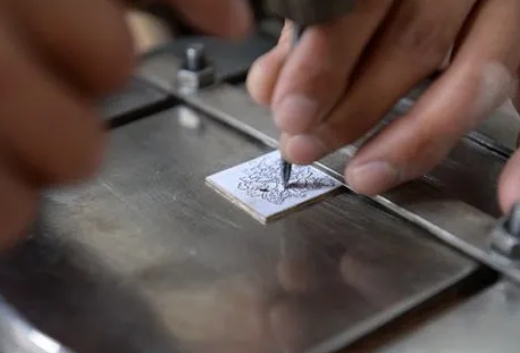Detailed Process of Silver Plating
Time:2024-04-27 22:17:19 Source:未知 Click:次
Silver plating technology is widely popular in industries such as precision electronics and jewelry due to its unique luster and excellent electrical conductivity. But how is silver plating actually done? This article will provide a detailed explanation of the entire silver plating process, taking you through each step.
Silver plating, in simple terms, is the process of covering the surface of an object with a thin layer of silver. While this may sound straightforward, it actually involves meticulous steps. Let's start with the preparation.
【Choice and Preparation of Base Material】
Quality silver plating results require the right base material. Typically, copper or copper alloys are used as the substrate due to their good adhesion with silver. Before silver plating, the substrate must be thoroughly cleaned to remove impurities such as grease and oxides. This step is like preparing a canvas before painting and is key to success.
【Acid Cleaning and Activation】
Next is the acid cleaning process, which uses acidic solutions to remove the oxidized layer on the surface, revealing a fresh metal surface. This is followed by an activation treatment that aims to form a thin layer of silver crystals on the substrate surface, laying a good foundation for the subsequent plating.
【Silver Plating】
The silver plating solution usually consists of silver nitrate or other silver salts dissolved in water with the addition of appropriate additives. The pre-treated substrate is immersed in the silver plating solution, and through the action of an electric current, silver ions are reduced to pure silver and deposited on the substrate surface. This process is like a sower casting seeds, waiting patiently for the harvest.
【Thickness Control and Monitoring】
The thickness of the plating layer is directly related to the product's appearance and performance, hence it requires precise control. Professional thickness measuring instruments are used for real-time monitoring to ensure that each product meets the expected standards.
【Post-Treatment】
After silver plating, in order to improve the corrosion resistance and wear resistance of the plating layer, further post-treatment processes such as polishing and applying protective coatings are usually required. This is akin to framing a fine artwork, making it even more perfect.
【Inspection and Packaging】
The final step is a strict quality inspection of the finished product, including aspects such as plating thickness, adhesion, and appearance, to ensure that each item meets the standards. Only qualified products are carefully packaged, waiting to be sent around the world.
Through the detailed explanation of the above processes, I believe you now have a deeper understanding of the silver plating technique. Although silver plating may seem simple, it actually encompasses rigorous scientific principles and exquisite craftsmanship. Just like manufacturing a precision watch, every detail cannot be overlooked, and each operation must be precise. It is these complex and meticulous procedures that endow silver-plated products with their unique charm and practical value.


